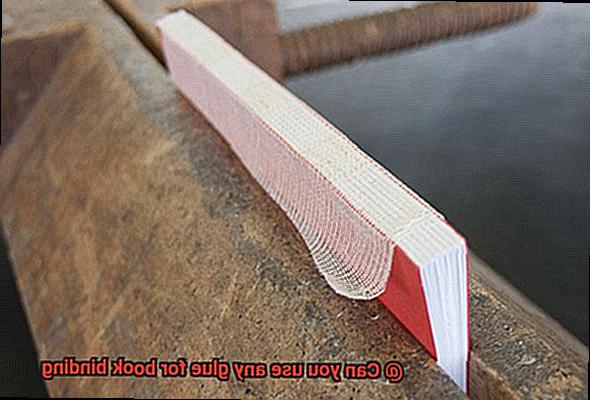It’s the sticky, squishy sensation that has captured the hearts of crafters young and old. But here’s the burning question: can any white glue get you that perfect slime consistency? Today, we’re diving deep into the mesmerizing world of slime-making to uncover the truth behind choosing the right glue for this beloved DIY project.
White Glue Basics:
Let’s talk about white glue, also known as PVA glue. This stuff is a staple in slime recipes because its main ingredient, polyvinyl acetate, has some serious adhesive powers. But hold on tight because not all white glues are created equal when it comes to making slime.
The Importance of Non-Toxicity:
Safety first, my friends. When it comes to picking your slime glue, always go for non-toxic options that are labeled as safe for kids. After all, you don’t want any icky chemicals messing with your slimy masterpiece. Keep those little hands safe and sound.
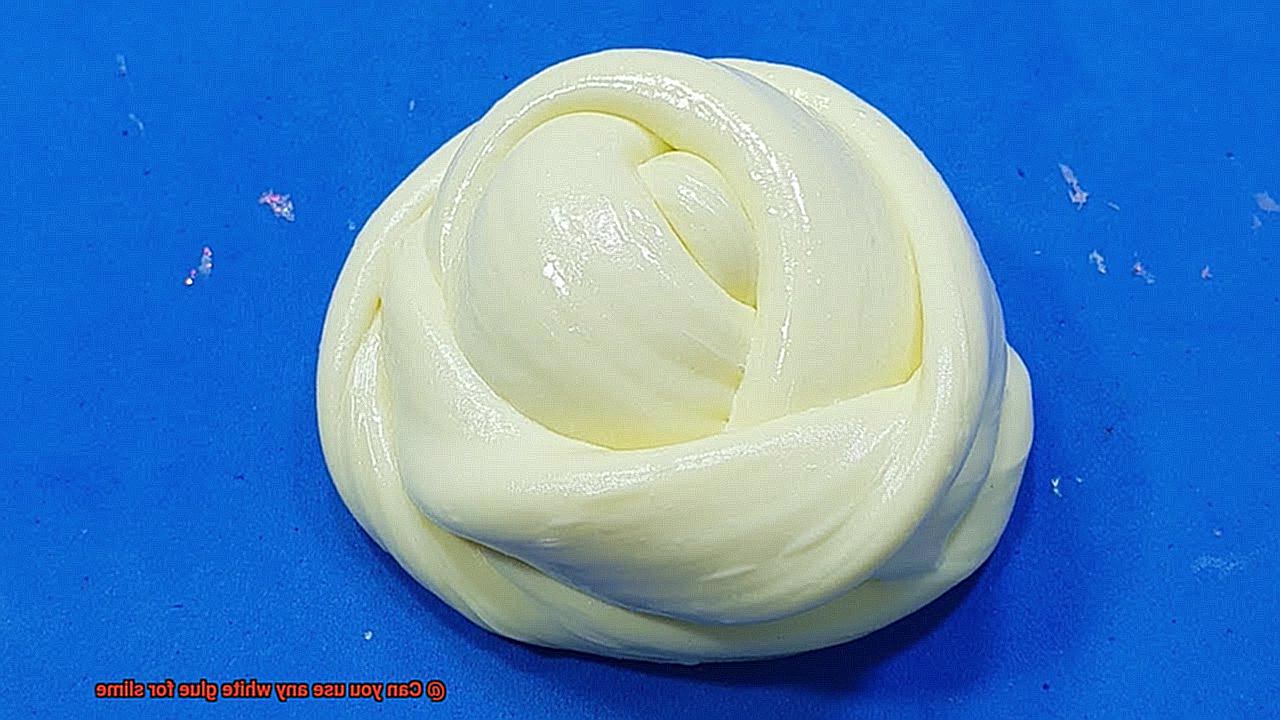
Viscosity Matters:
Get ready for some science talk. The thickness and stretchiness of your slime depend on the viscosity of the glue you use. Look for a white glue with medium viscosity – it’s like finding that perfect sweet spot between runny and thick. Slowly pour it into your slime mix and watch that magic happen.
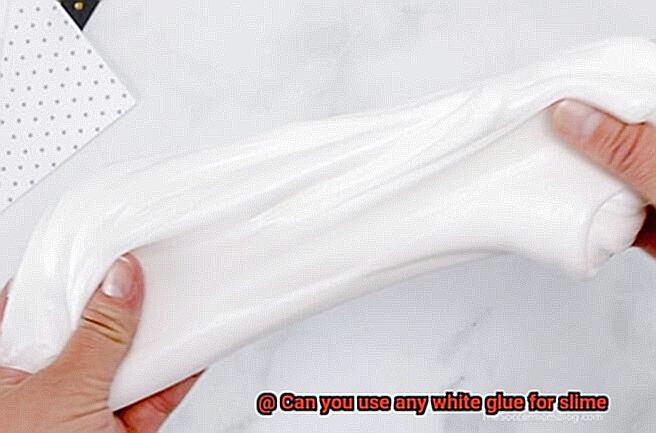
Avoiding Ingredient Conflicts:
Here’s a heads up: some white glues might have extra ingredients like boric acid or borate that help achieve that dreamy slime texture. But beware. These additives may not play well with other slime ingredients or require special precautions. So before you dive in, double-check those recipe instructions.
What is PVA and why is it important?
Contents
- 1 What is PVA and why is it important?
- 2 Popular Brands of White Glue for Slime-Making
- 3 How to Choose the Right White Glue for Slime-Making
- 4 Testing if a Glue is Suitable for Slime-Making
- 5 Other Ingredients Needed for Slime-Making
- 6 Tips and Tricks for Making Slime with White Glue
- 7 Common Mistakes When Using White Glue for Slime-Making
- 8 Alternatives to White Glue
- 9 Conclusion
This magical white glue plays a crucial role in making the perfect slime recipe. In this blog post, we will explore the importance of PVA glue in slime-making and share tips on choosing the right glue for your slimy creations.
The Consistency:
PVA glue is known for its thick and sticky texture, making it ideal for achieving the slimy consistency we all love. When mixed with other ingredients like borax or contact lens solution, PVA glue undergoes a chemical reaction that transforms it into a slimy substance. Without PVA glue, your slime would lack that signature stretchiness and squishiness.
The Adhesive Properties:
PVA glue not only gives slime its texture but also holds it together. When combined with other ingredients, PVA glue forms cross-links between its molecules, creating a network that gives slime its unique structure and elasticity. Without this adhesive property, your slime would simply fall apart. So, next time you’re playing with your stretchy creation, thank PVA glue for keeping it intact.
Safety First:
Parents can breathe a sigh of relief because PVA glue is safe to use for making slime. It is non-toxic and does not contain harmful chemicals, making it suitable for children to enjoy this sensory play activity. However, always check the label and perform a patch test if you have any concerns or allergies.
Choosing the Right Glue:
Not all PVA glues are created equal when it comes to slime-making. Look for glues with a high PVA content for better results. Popular choices include Elmer’s Glue-All, Cra-Z-Art School Glue, AmazonBasics School Glue, and Gorilla Kids School Glue due to their high PVA content.
Popular Brands of White Glue for Slime-Making
Well, get ready to unleash your creativity because there are a plethora of popular brands of white glue that are perfect for making slime. Let’s take a closer look at some of the top contenders in the exciting and squishy realm of slime-making.
Elmer’s Glue is a tried and true favorite among slime enthusiasts. This iconic brand is known for its strong adhesive properties, allowing you to create thick and stretchy slime that’s perfect for satisfying squishing and stretching. With Elmer’s Glue, you have a variety of formulas to choose from, including classic white glue and clear glue. These options give you the freedom to experiment with different textures and appearances in your slime, making it an absolute must-have for any slime-making adventure.
If you’re looking for a smooth consistency and easy mixing, then Cra-Z-Art white glue is the brand for you. Specifically marketed for slime-making, Cra-Z-Art delivers slimy and stretchy results that are loved by many. With this brand, your slime creations will be ooey-gooey perfection, guaranteeing hours of sensory delight.
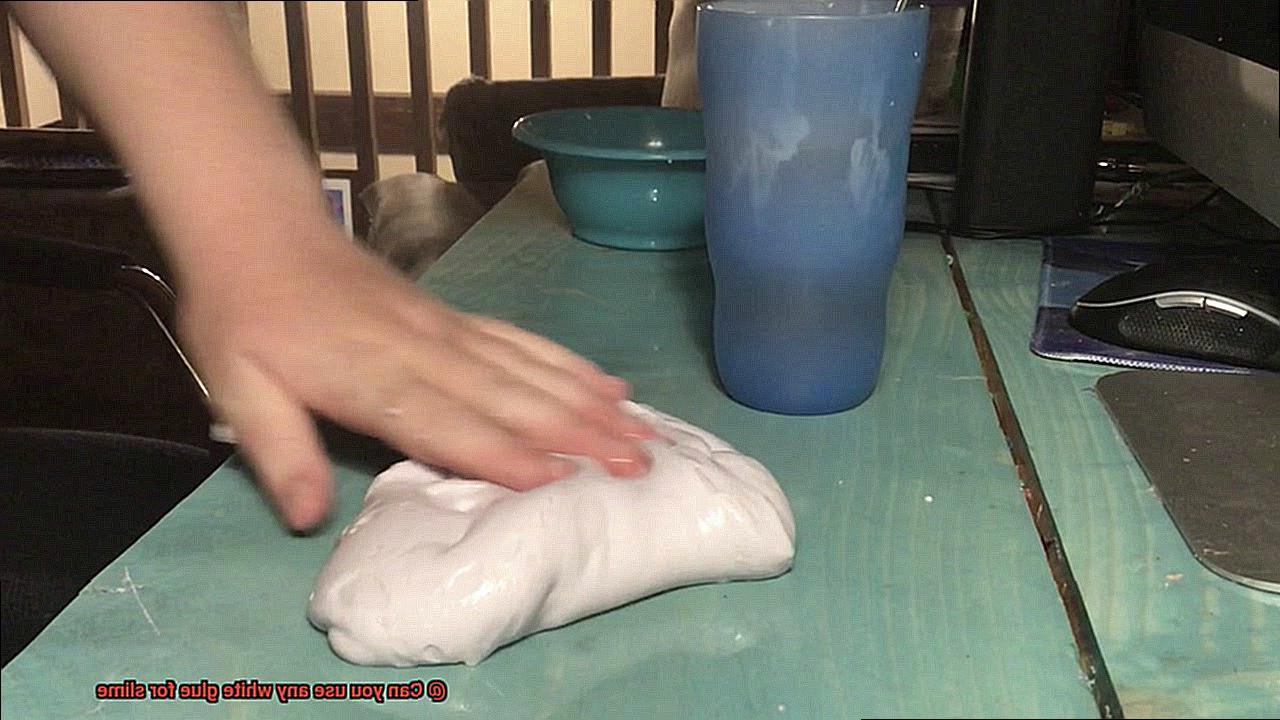
For those who prefer the convenience of online shopping, AmazonBasics white glue is your go-to option. This affordable choice offers a strong adhesive property that produces thick and gooey slime. Plus, it’s readily available on the Amazon platform, making it a convenient choice for all your slime-making needs. Just a few clicks away from creating your own magical slime concoctions.
Sargent Art is a trusted brand among artists and crafters, and their white glue is no exception. With reliable adhesive strength, Sargent Art white glue produces smooth and stretchy slime that’s perfect for playing and molding. It’s no wonder that many slime-makers turn to Sargent Art for their creative creations.
Now, let’s talk about a brand that may surprise you – Gorilla Glue. While Gorilla Glue is famous for its heavy-duty bonding properties, it has also gained popularity in the slime-making community. Gorilla Glue’s white glue formula provides excellent adhesion, resulting in firm and durable slime. However, do keep in mind that Gorilla Glue may create a denser and less stretchy slime compared to other brands. So if you’re looking for a slime with a bit more substance, Gorilla Glue might be the perfect choice for you.
Feeling adventurous? Why not try making your own slime glue at home? Homemade slime glue recipes often involve mixing water, borax, and white glue to create a personalized slime base. This DIY approach allows for customization of the slime’s consistency, texture, color, and scent. Get ready to unleash your inner scientist and create slime that is uniquely yours.
How to Choose the Right White Glue for Slime-Making
One of the most critical decisions you’ll make is selecting the perfect white glue. The type of glue you choose can significantly impact the texture and consistency of your slime. In this comprehensive guide, we will explore various factors to consider when choosing the right white glue for your slime-making adventures.
Look for School Glue:
When searching for white glue, it’s essential to find options labeled as “school glue” or “craft glue.” These types of glues are generally water-based and possess the ideal consistency for creating slime. Be cautious of glues labeled as “quick-drying” or “super glue” as they may not work well for slime-making, resulting in stiff and clumpy slimes.
Consider Transparency:
Do you desire a clear or opaque slime? If you prefer clear slime, opt for a white glue that dries clear. Some white glues may have a slight yellowish tint when dry, which can compromise the clarity of your slime, making it less transparent and visually appealing.
Say No to Additives:
For optimal results, select plain white glues without any added extras such as glitter or confetti. While these additives may seem tempting, they can interfere with the texture and consistency of your slime, affecting its overall quality.
Trusted Brands:
Trustworthy brands renowned for their exceptional slime-making qualities include Elmer’s Glue, Cra-Z-Art, and Slime Glue. These brands have established themselves in the market due to their consistent quality, ensuring a successful and enjoyable slime-making experience.
Check PVA Content:
Polyvinyl acetate (PVA) is the primary adhesive ingredient in white glue that gives it its bonding properties. A higher PVA content typically yields better slime results. Elmer’s Glue-All is a popular option with a high PVA content, while Elmer’s School Glue may have a lower PVA content, resulting in a stickier slime. Consider your desired slime consistency when choosing a glue with the appropriate PVA content.
Experiment and Have Fun:
Don’t be afraid to experiment with different brands and types of white glue to discover your perfect slime consistency. Each person has unique preferences, so don’t hesitate to try out various options to find what works best for you. The joy of slime-making lies in exploring and finding your own personal recipe for slime perfection.
Testing if a Glue is Suitable for Slime-Making
In this exploration of glue selection for slime-making, we will delve into the key factors to consider when testing if a glue is suitable for creating that captivatingly stretchy and squishy slime we all adore.
Consistency: The Key to Success
One of the foremost factors to evaluate is the consistency of the glue. In the art of slime-making, finding the perfect viscosity is paramount. A glue that is excessively runny may result in a lackluster, watery slime devoid of shape and texture. Conversely, a glue that is too thick can present challenges in blending other ingredients, hindering the achievement of that irresistibly smooth and elastic consistency we all strive for.
Adhesive Properties: The Glue That Holds it All Together
Another essential aspect to assess is the adhesive properties of the glue. A successful slime demands a glue that holds its form without being excessively sticky or rigid. Opting for a glue with robust bonding capabilities guarantees that your slime creation will maintain its integrity, enduring countless satisfying stretches and squishes.
Drying Time: The Fine Balance
It is crucial to consider the drying time of the glue as well. Slime requires sufficient time to set and solidify, but if the glue takes an eternity to dry, you risk ending up with a sticky quagmire instead. Conversely, if the glue dries too quickly, incorporating other ingredients becomes arduous, impeding the attainment of that desired consistency. Striking a harmonious balance between drying time and workability is essential in crafting that sublime slime experience.
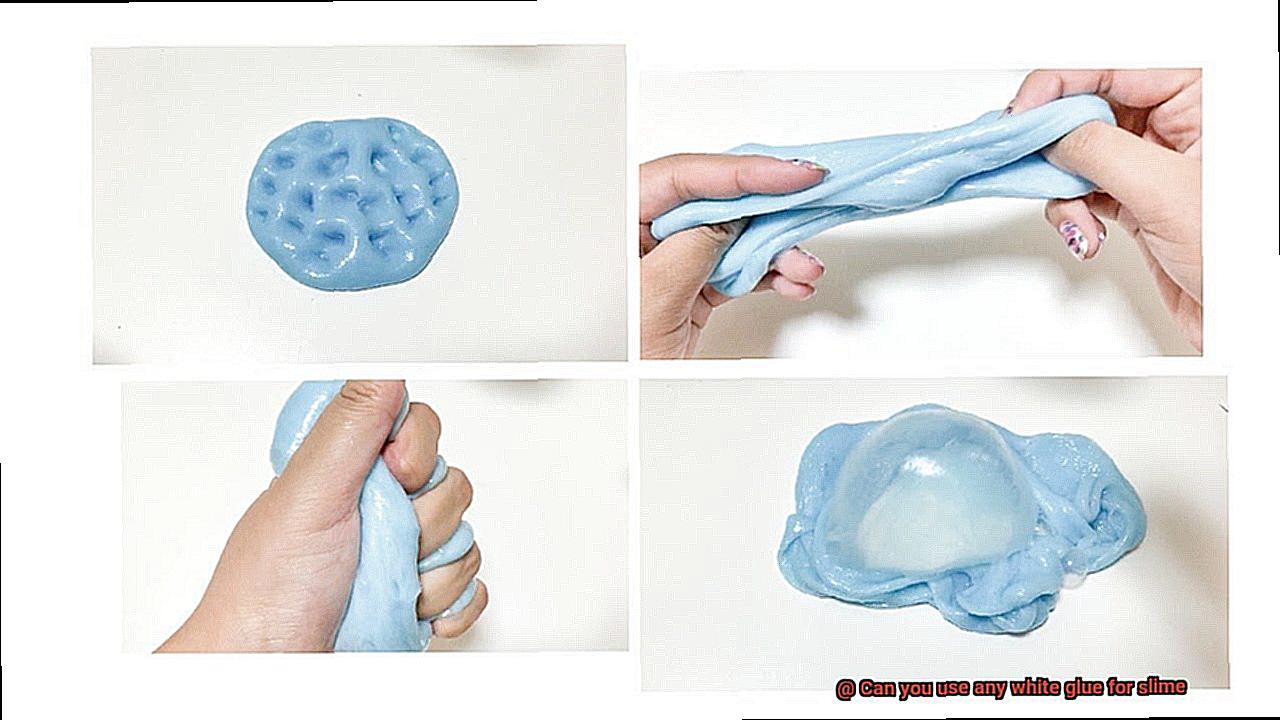
Safety First: Nurturing Creativity Responsibly
In addition to these factors, it is imperative to ponder any additional additives or chemicals present in the glue. Ensuring the chosen glue is non-toxic and safe for use, particularly when creating slime with children, is paramount. Always consult the label and scrutinize for potential irritants or harmful substances to safeguard the well-being of all involved.
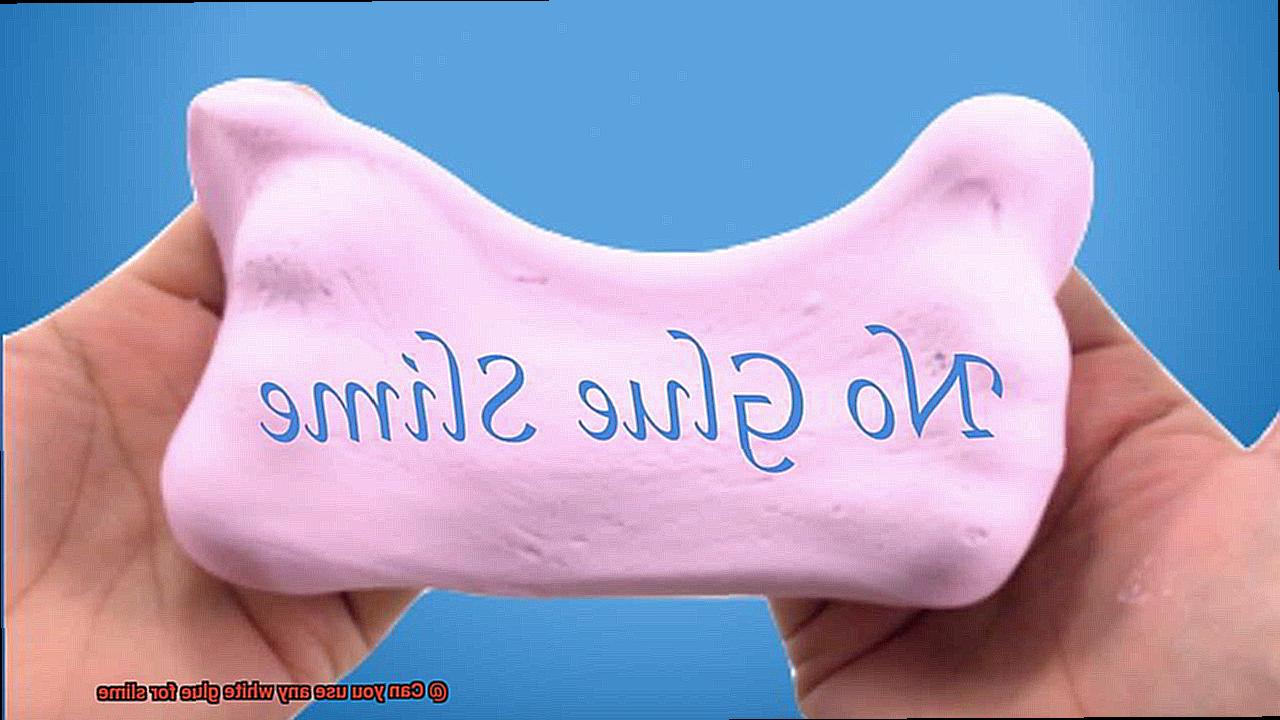
The Power of Experimentation: Testing for Success
To ascertain if a glue is suitable for slime-making, conducting a small test is highly recommended. Combine a small amount of the glue with other slime ingredients, such as borax solution or liquid starch. Observe how well the glue integrates into the mixture and pay heed to the resulting consistency and texture of the slime. A seamless blend yielding a smooth and elastic slime signifies that the glue is likely an ideal companion for your slime-making escapades.
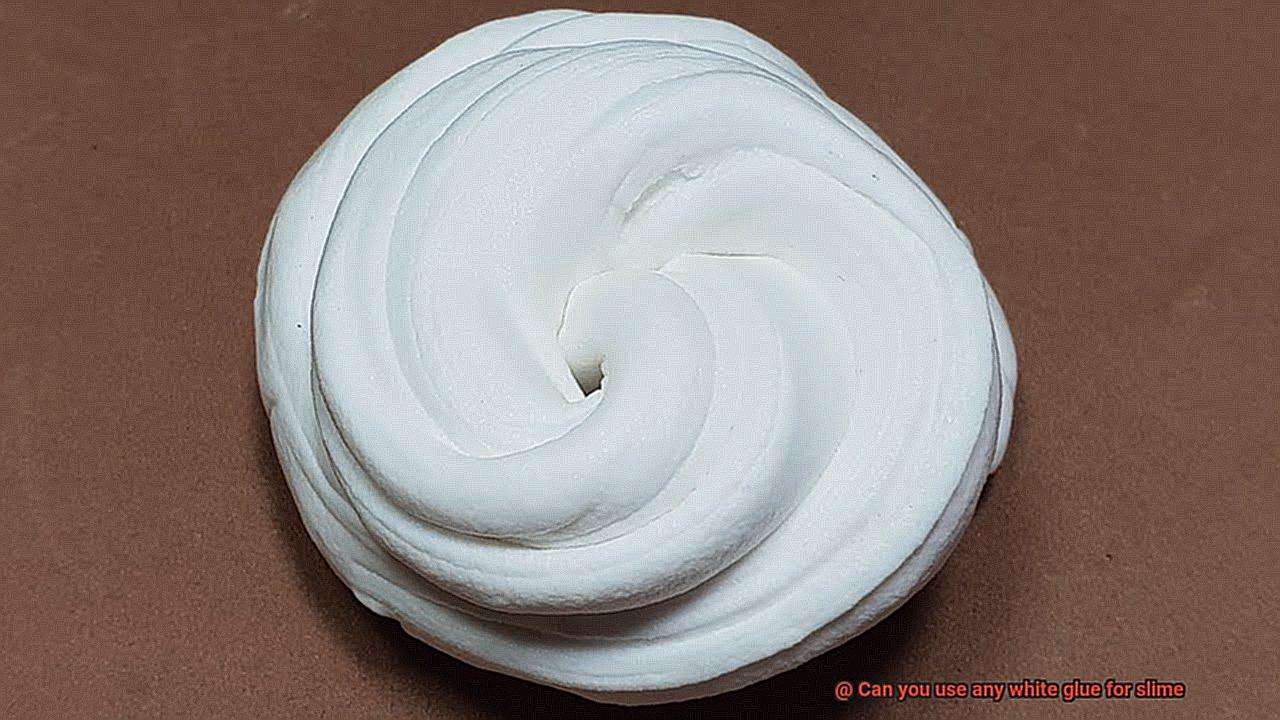
Other Ingredients Needed for Slime-Making
Let’s explore the key players in the slime-making game and discover the magic they bring.
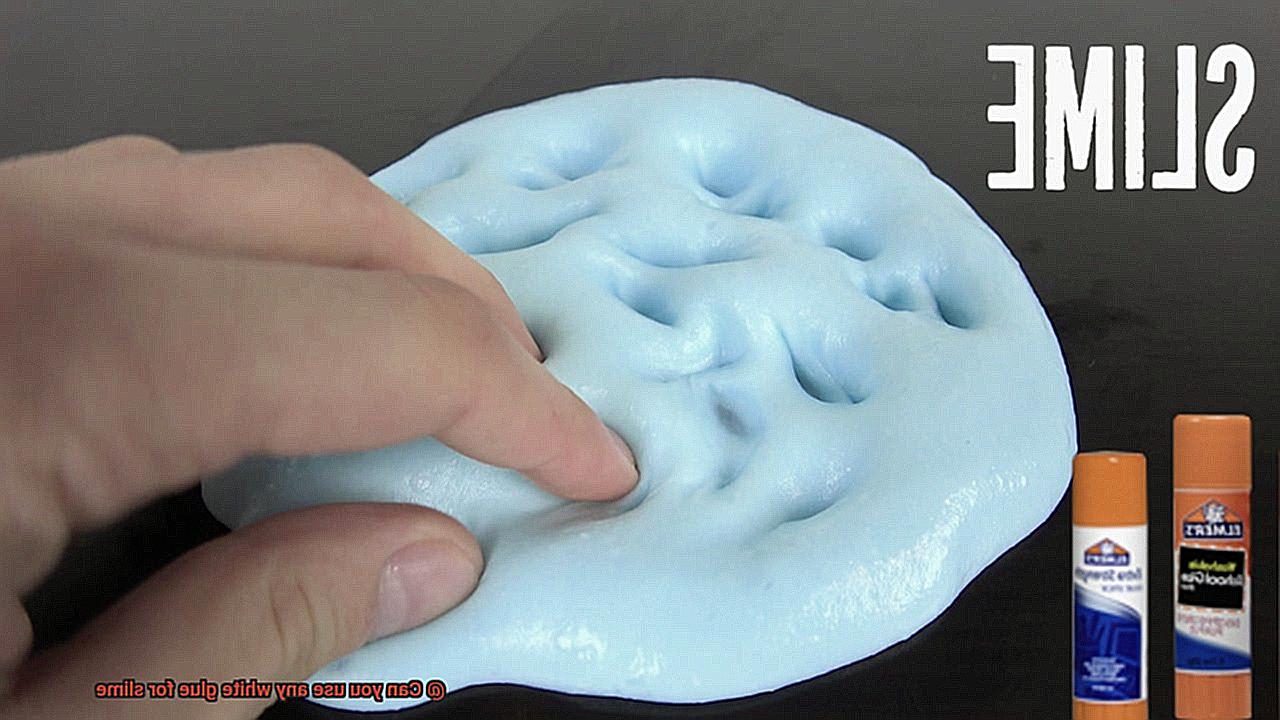
First up, we have the beloved borax. This little gem is a popular activator used to make slime. It works its magic by binding the molecules in the glue together, creating that stretchy and slimy texture we all adore. But be cautious, my friends. Borax can be harmful if ingested or if it comes in contact with your eyes. So handle it with care and keep it away from curious little ones.
If you’re looking for a safer alternative, liquid starch is your go-to. It performs the same job as borax by binding those glue molecules together, but without the same risks. Liquid starch is generally considered a more kid-friendly option and can give you equally fabulous slime results.
Now here’s a surprising hero in the world of slime-making – contact lens solution. Who would’ve thought, right? This everyday product contains boric acid, which helps create that perfect slimy consistency. Just make sure you check the ingredients and ensure that your chosen contact lens solution actually has boric acid in it – not all of them do.
Last but certainly not least, we have baking soda. This versatile ingredient is often added to slime recipes to give it a firmer and more moldable texture. When combined with the other ingredients, baking soda reacts to form a cross-linking network that gives your slime its unique properties.
But wait, my fellow slime enthusiasts, there’s room for creativity beyond these essential activators. Want softer and more stretchy slime? Add some lotion. Craving a pop of color or a touch of sparkle? Food coloring and glitter are your best friends in the world of slime-making. So let your imagination run wild as you create the most mesmerizingly gooey and satisfying slimes ever.
Tips and Tricks for Making Slime with White Glue
The world of slime-making has captured the hearts of millions, and white glue is the star ingredient that brings this gooey sensation to life. White glue is not only readily available and affordable, but it is also safe for slime enthusiasts of all ages. However, not all white glues are created equal. In this article, we will explore the importance of using the right kind of white glue when making slime and share valuable tips and tricks to ensure a successful slime-making experience.
Choose Clear Glue for Vibrant Slime:
When it comes to selecting white glue for making slime, opt for clear or transparent glue instead of colored or glitter glue. Clear glue provides a flawless base for adding colors and other embellishments later on. Colored or glitter glue may alter the final appearance of the slime, resulting in a less vibrant and customizable creation.
Check Consistency Before Starting:
Before diving into your slime-making adventure, take a moment to inspect the consistency of your white glue. It should be smooth, devoid of any lumps or clumps. Thick or separated glue may not yield the best results when making slime. Ensuring a smooth and even consistency sets the stage for a delightful slime-making experience.
Perfect Ratio for Dreamy Slime:
To achieve that coveted dreamy slime consistency, follow a simple ratio of 1:1 for white glue and water. Mix equal parts of white glue and water together before adding any other ingredients. This balanced ratio prevents the slime from becoming too sticky or too runny, resulting in the perfect stretchy and squishy texture we all adore.
Add Colors Before Activators:
If you desire colorful slime creations, add your desired colors or glitters to the white glue mixture before incorporating any activators. This ensures an even distribution of colors throughout the slime, resulting in visually stunning creations. Mix in your favorite hues and watch as your slime comes to life in a mesmerizing kaleidoscope of colors.
Gradually Add Activators:
Activators such as borax, liquid starch, or contact lens solution are crucial for transforming the white glue mixture into slime. However, it is essential to start with a small amount of activator and gradually add more as needed. Over-activating the slime can lead to a stiff or rubbery texture, so take it slow and find the perfect balance.
Common Mistakes When Using White Glue for Slime-Making
Are you ready to embark on a thrilling slime-making adventure? As you grab that bottle of white glue and prepare to create your masterpiece, it’s crucial to be aware of the common mistakes that can hinder your slime-making success. By avoiding these pitfalls, you’ll ensure that your slime is just the right consistency and texture, perfect for hours of sensory enjoyment.
- Insufficient Glue: One of the biggest mistakes beginners make is underestimating the amount of glue needed. Using too little glue can lead to a sticky and unworkable slime. To avoid this, always follow the recipe guidelines and measurements precisely. Remember, the right proportions of glue are essential for achieving the desired slime consistency.
- Wrong Type of White Glue: Not all white glues are created equal when it comes to making slime. Some glues contain additives or chemicals that can negatively affect the texture and consistency of your slime. It’s crucial to use a non-toxic, washable white glue specifically labeled for crafting or slime-making purposes. This will ensure that your slime turns out just right.
- Excessive Water Addition: While water is often used in slime recipes to activate certain ingredients, adding too much water can result in a runny and unwieldy slime. It’s important to add water gradually, following the recipe instructions meticulously. By doing so, you’ll avoid the mistake of ending up with a slimy mess instead of a well-formed slime.
- Overmixing the Glue: Overmixing can be detrimental to your slime’s texture. Excessive mixing can cause the slime to become stiff or rubbery, making it less enjoyable to play with. Remember, mix the ingredients just until they are fully combined, without going overboard. This will ensure that your slime maintains its stretchiness and malleability.
- Expired or Old White Glue: Just like any other product, white glue has an expiration date. Using expired or old glue can lead to unsuccessful slime-making as the adhesive properties may have deteriorated over time. Always check the expiration date on the bottle and use fresh glue for optimal results.
- Insufficient Setting Time: Patience is key when it comes to slime-making. Allowing your slime enough time to rest and settle after mixing all the ingredients together is crucial for achieving the desired consistency. Rushing this step can result in an underdeveloped slime that may require additional adjustments or additions later on. Give your slime the time it needs to fully develop before making any judgments or modifications.
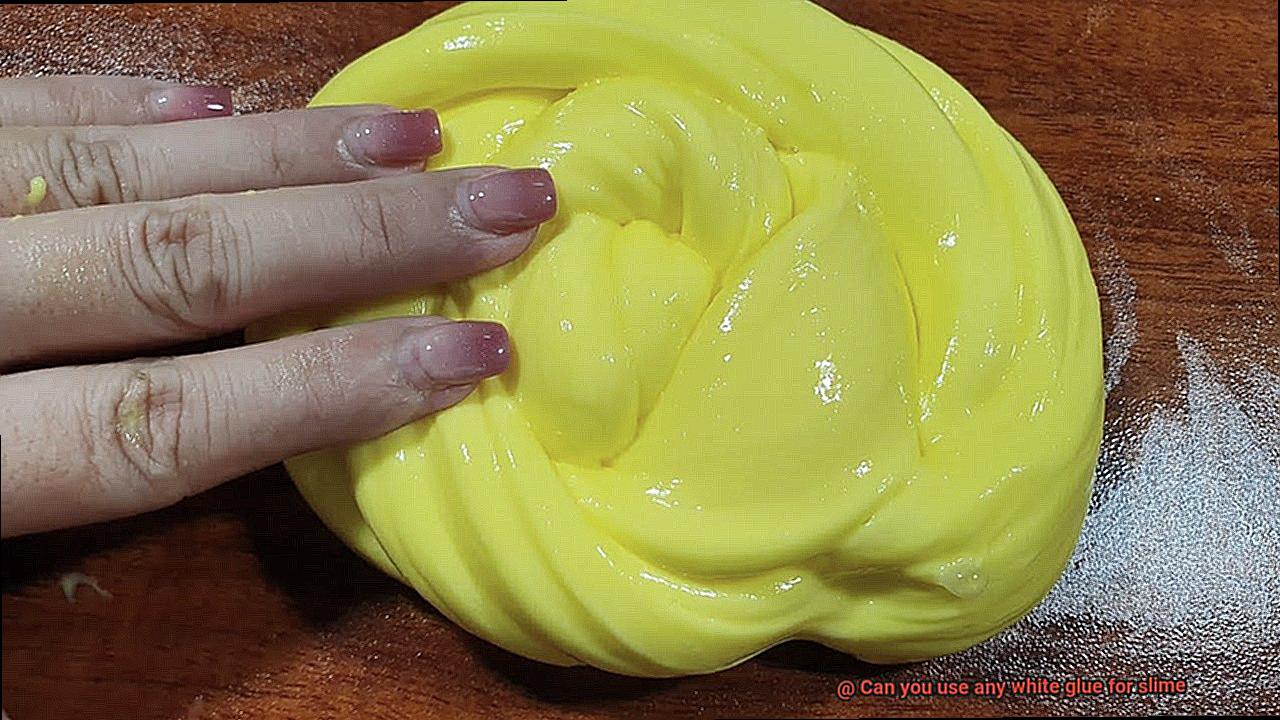
Alternatives to White Glue
There are plenty of alternatives to white glue that can be used to make slime.
Let’s dive into the options:
- Clear Glue: Just like white glue, clear glue is an excellent alternative. It shares the same adhesive properties and can be substituted in most slime recipes without any noticeable differences in texture or consistency. Plus, using clear glue gives your slime a transparent appearance, adding an extra twist to your creations.
- Liquid Starch: Take a trip to your local supermarket’s laundry aisle, and you’ll find liquid starch waiting for you. This magical substance acts as an activator for slime, helping it achieve that stretchy and gooey texture we all love. Simply mix it with your other ingredients, and voila – slime.
- Borax Powder: If you’re looking for an alternative that packs a punch, look no further than borax powder. Mix it with water to create a solution that serves as an activator for slime. However, be cautious if you have sensitive skin or prefer a borax-free recipe.
- Contact Lens Solution: Believe it or not, contact lens solution can double as an activator for slime. Just make sure it contains boric acid, as that’s the key ingredient needed for optimal results. Mix it with your glue, and watch the magic unfold.
- Shampoo and Body Wash: Who knew your shower essentials could also be used to make slime? Shampoo and body wash contain surfactants that help bind the ingredients together and create that slimy texture we all adore. Just remember to choose products without harsh chemicals or sulfates.
- Toothpaste, Hand Sanitizer, and Cornstarch: Feeling adventurous? These household items can also be used as alternatives to white glue. However, they may require additional experimentation and adjustments to achieve the desired slime consistency. So, get creative and see what works best for you.
It’s important to note that while these alternatives can be used to create slime, the texture and durability may differ compared to recipes using white glue. For the best results, follow specific slime recipes designed for the alternative ingredients you’re using.
toUJedyTCWw” >
Also Read: Will Elmer’s glue dissolve in water?
Conclusion
In conclusion, it is important to note that not all white glues are created equal when it comes to making slime.
While some may work perfectly fine, others may not provide the desired consistency or stretchiness. It is recommended to use a white glue specifically formulated for slime-making, as they often have the right balance of ingredients to create the perfect slime texture.
Remember, the quality of your slime will ultimately depend on the quality of the glue you use.

